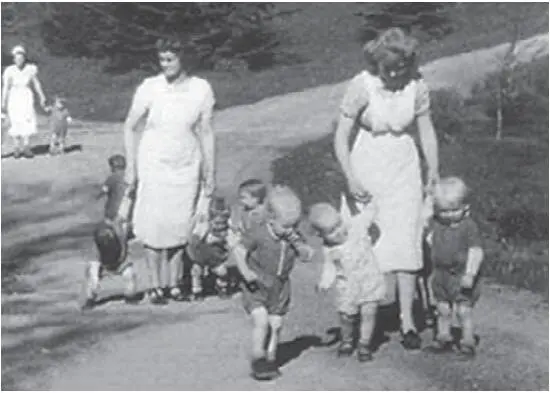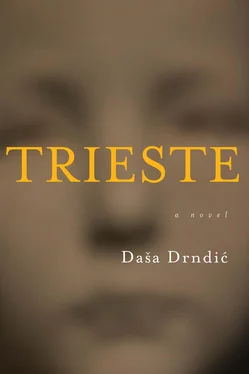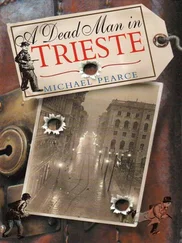Counting on the high fertility of the German woman, Himmler opens centres all over Germany, and when he decides there are enough there, he proceeds to Norway, where the women are also blue-eyed and blonde and where so many pure-blood German soldiers are stationed. They adapt hotels and villas, castles and ski resorts, some of them donated, many taken from Jews. Medical and administrative personnel are first checked, then hired. The food is good, the rooms are light and decorated with German symbols, the air is pure, the natural surroundings are beautiful and the care is first-rate. The war is going on somewhere far off and — for these select children — it is inaudible. Himmler spares no expense in equipping the Lebensborn homes, he takes as much as he needs, dipping chiefly into funds from confiscated Jewish property.
So from December 1935 to April 1945 it is lively at Heim Hochland in Steinhöring. There are 50 beds for mothers and 109 beds for children in Heim-Hochland. The building, previously the property of the Catholic Church, had been used as a hostel for retired priests. Himmler gives the Church 55,000 Reichsmarks for the building, and then invests another 540,000 in it so that the facility can house his dreams. Then, in 1937, Heim Harz is furnished in Wernigerode with 41 beds for mothers and 48 beds for children. That same year Heim Kurmak is set up in Klosterheide—23 beds for mothers, 86 for children. From 1938 to February 1945 Heim Pommern is built in Bad Polzin (today in Poland) with 60 beds for mothers and 75 beds for children. Only 217 babies are born at Heim Friesland near Bremen with its 34 beds for mothers and 45 beds for children. Heim Friesland ceases to operate in January 1941, because at the time a small allied bomb attack begins on Bremen and the surrounding areas. So the children and mothers are sent to other homes, and the head nurse comes to Norway to set up the Norwegian Lebensborn homes in which the S.S. will accommodate the sons of the homeland. Not four years later these sons become nullius filii, needed by no-one, forgotten. Heim Friesland was the most luxurious within the Lebensborn organization, having previously belonged to the Lahusens, a wealthy family, industrial magnates from Bremen and the surrounding area, but the Lahusen family declared bankruptcy before the war and sold their property, and Himmler immediately nabbed the estate for his project of the sweeping Germanization of select European peoples.

From 1939 to March 1945, Kinderheim Taunus was up and running in Wiesbaden with 44 children’s beds; Kriegsmütterheim opened at Stettin in 1940, followed by Kinderheim Sonnenwiese in 1942 in Kohren-Sahlis near Leipzig, with 170 children’s beds, where the “aunties” took the children out for walks each day to make them strong and fit for adoption, for a better life, stable, planned and set, for a life full of the love that had been stolen from them, from which they were stolen. Heim Schwarzwald opens in 1942 in Nordrach near Baden, and a little later Kinderheim Franken I and Kinderheim Franken II are adapted at Schalkhausen near Ansbach, and then the S.S. confiscates the villa belonging to the Mann family in Munich, on Poschinger Strasse, and houses newly obtained children there.
In Austria at Pernitz-Muggendorf, today a suburb of Vienna, Wienerwald House opens in 1938 with 49 beds for mothers and 83 beds for children, and in 1943 “my” house, Alpenland, opens at Schloss Oberweis near Gmunden, where they change my identity and hand me over to Martha and Jürgen, having done a superficial screening, sloppy and hasty. By then the S.S. are in a big rush, because the house is about to shut down, because Himmler will soon be biting into his cyanide capsule, because cinders are all that is left of his magnificent dream of cloning a super race, a superman of a new race. In Austria there is another Kinderheim at Neulengbach near St Polten, about which I have no information. I might have ended up in Luxembourg at Heim Moselland in Bofferding, because mainly stolen children are accommodated at Moselland. After all that searching I finally ascertain that I, too, was stolen from the Adriatisches Küstenland, not saved after my parents were killed, as Martha Traube told me on her deathbed. Isabella Fischer (Rosenzweig by marriage) tells me in 1999 that there were about a hundred, roughly one hundred high-level S.S. officials milling around the Adriatisches Küstenland, so go to the Berlin archive and search through their dossiers. By digging through all the local and central Church and city archives of Germany, Austria, Italy, Slovenia and Croatia, I discover precisely 1,532 male children with the name Antonio born in the Adriatisches Küstenland in the second half of 1944.
Let me finish with the homes.
Belgium: the Ardennen in Wegimont near Lüttich (from 1943 to September 1944) for mothers of German blood, fertilized by S.S. soldiers.
France: the Westland in Lamorlaye near Chantilly.
The Netherlands: the Gelderland in Nijmegen with 60 beds for mothers and 100 beds for children, and, finally,
Norway, where this was a flourishing activity and from whence today there is a little army, not of baby boomers, but of baby doomers, about 12,000 all told, born between 1942 and 1945:
Heim Geilo (1942), 60 beds for mothers, 20 for children.
Kinderheim Godthaab near Oslo, opened in 1942.
My name is Ester, today. I was born at Kinderheim Godthaab as Gisela. When I turned two my mother advertised in the local newspapers that she was putting me up for adoption. I had blonde curls and I was pretty. When the people who adopted me found out my father was German, they returned me to my mother and drew a large swastika on my little rucksack. Then another family came forward and my mother told them the truth. They were wonderful parents, but they never told me I was adopted. When I turned forty-three a woman called and said, For years I have been shadowed by a little girl with blonde curls and a swastika on her rucksack. I am your mother.
Twenty-seven children from Kinderheim Godthaab were declared mentally retarded and consigned to institutions for the retarded throughout Norway. Many of them spent their whole lives there. Some thirty children were secretly sent to Sweden. In Sweden their names were changed and they were put up for adoption. Those who adopted them were told they were children of members of the Resistance who had been killed, or Jewish orphans. Most of these people don’t know to this day that they are not the people they believe themselves to be. Most of them have no idea they are someone else. I only found my German relatives in 1995.
I, too, lived at Godthaab. I was assigned number 603. My mother brought me there and left right away. The discipline was rigorous. The nurses had white, starched uniforms and spoke only German. Then in 1946 they moved me to a lunatic asylum. I almost went mad with terror. Inmates were bound with chains. Some defecated in their clothes. Wherever. They screamed. I was five. When I turned twenty-three they released me. They said, You’re free, good luck. I was fortunate, however. No-one ever raped me. I completed two grades of elementary school. I worked in a factory at the hardest physical jobs. I tried to kill myself, shoving my arms into a machine for cutting waste, but I survived. My name is Hansen. I found my mother in 1970. She said, Get out of my sight. She said, Your S.S. father croaked in 1953.
I was born in 1943. My father died that same year and my mother was too ill to look after me. They sent me to Godthaab when I was six months old. At the end of the war they decided I was mentally retarded. At the age of seven I was sent to the Emma Hjorth mental hospital where they put me in a straight jacket at night. When they released me I got a job as a housecleaner. I don’t know who my mother was. I don’t know who my father was. I am a member of the society of Lebensborn children who are demanding compensation from the Norwegian government. I know Hansen. After the war they had to hate someone, so they hated us, the children of German soldiers. But there was no talk about us in public. We are a footnote to a history which Norway would like to expunge. After the war they tried to send us all to Germany, but Germany at that point was poor and devastated and couldn’t take us in.
Читать дальше













